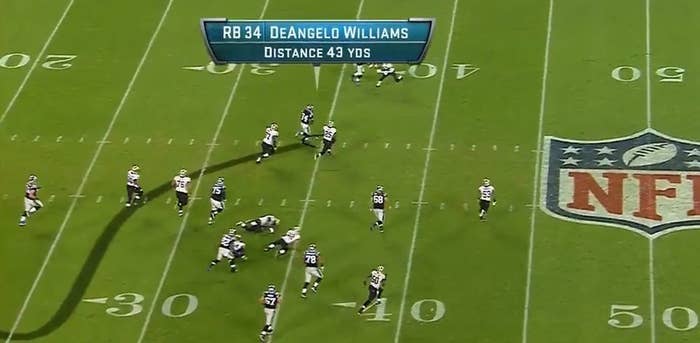
The NFL is rolling out new on-field tracking tools that let it know where its players are, where they're going, how fast they're getting there, and which route they're taking.
That's not surprising. Major league sports aren't just a physical contest — they're a data dump. Statistics fuel bets, fantasy leagues, and armchair coaching; they inform coaching decisions and give fans the opportunity to embed themselves deep into a sport. The NFL, though, has recently introduced an unprecedented level of that data collection.
After testing it last year, as of this season, the upper decks of all 31 NFL stadiums are ringed with sensors, all pointed at the field. They're looking for sensor tags, located under each of the players' shoulder pads, that are capable of live-tracking movements on the field of play. The tracking is extraordinarily accurate — according to Zebra Technologies, which makes the tags, the margin of error is less than six inches. That's a tiny amount, especially when compared to GPS, which is usually only accurate within yards.
Here's what one of the receivers looks like in action at Santa Clara's Levi's Stadium.
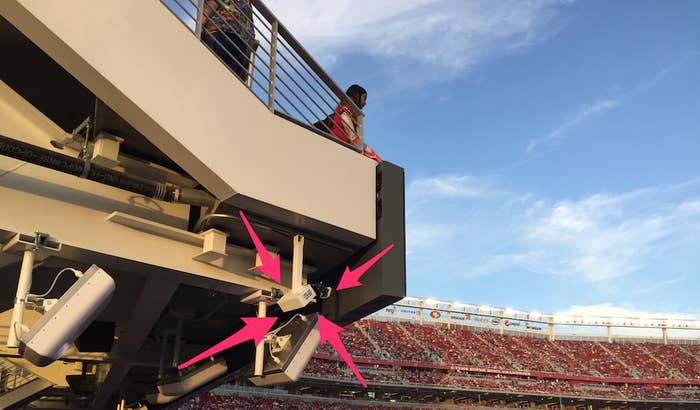
The result is a lot of data. The NFL knows where every player on every team is from the moment he walks out of the locker room on game day — when wireless gate technology activates his tags in the doorway. Once he gets on the field, he's tracked for the duration of the game, the sensors measuring movement, speed, and plays. These statistics are processed by Zebra, then passed to the NFL servers before being parceled out to different broadcast networks, box score providers, and — starting with this year's regular season — Xbox One.
The tracking technology in action during an instant replay:
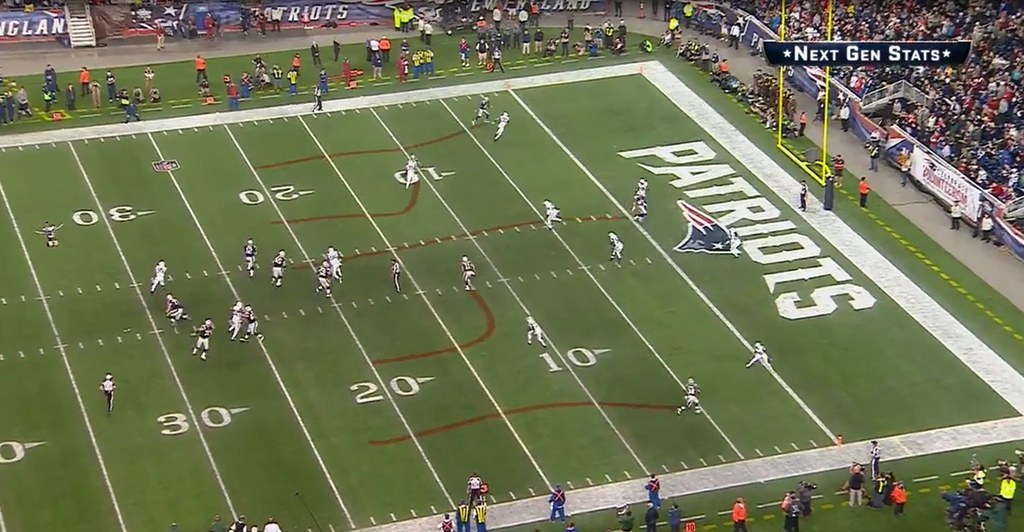
Right now, the place where this tracking is most noticeable, at least for viewers, is during live TV broadcasts. Players' paths can be tracked and highlighted during an instant replay; an announcer can quickly reel off statistics like how fast a wide receiver was running on a deep pass. That's a relatively superficial use case for now, but the technology's installation in every stadium (it was only in 18 last year) and the NFL's partnership with Zebra, whose employees attend every NFL game to oversee the tech, suggests that motion tracking is a growing part of the sport's future. (One place these sensor tags aren't, at least for now, is in the balls themselves.)
That rollout will take time, however. Though the NFL is sharing select data with broadcasters, box score providers, and the Xbox app, they're holding on to the lion's share of it — not even coaches and players see the raw data from the trackers. This is because the NFL says it doesn't want to rush the process of introducing new technology. Matt Swensson, senior director of emerging products and technology for the NFL, likened it to the rollout of video replays for referees: The technology was available long before it was formalized, because it took time to make sure it was being used correctly and, more importantly, fairly.
This is what the tracking technology will look like on the upcoming Xbox One NFL app:
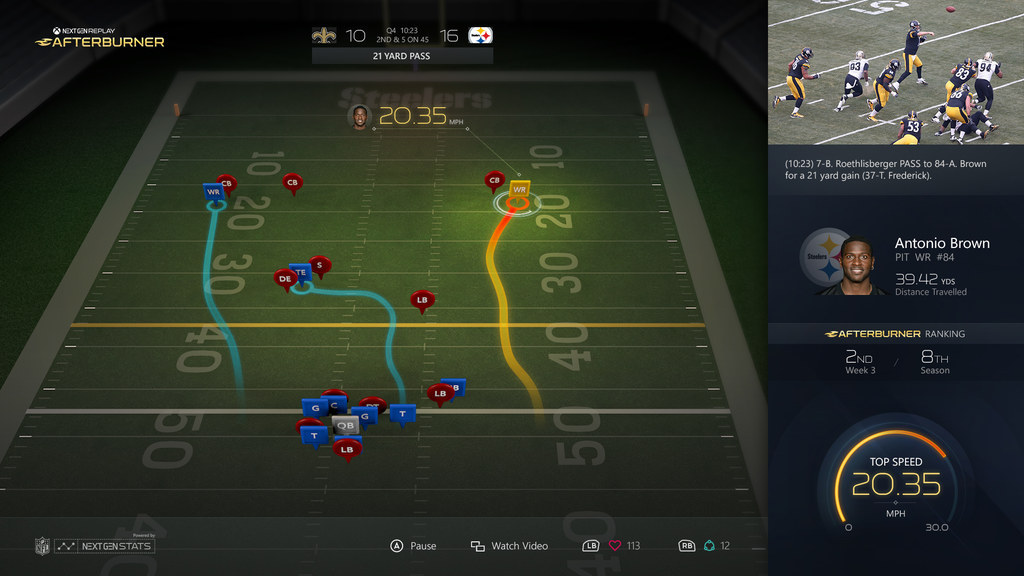
Until that happens, though, the technology is mostly a source of stats-geek Easter eggs, and an impressive technical achievement. The product is only useful if it's precise; to get down to a six-inch margin of error, Zebra uses ultra-wideband radio waves paired with at least 20 receivers mounted to the stadium. The tags themselves are tiny (about the size of a coat button), and durable — according to the company, not one has been broken, on the field or while being washed with the pads.
The tags are tiny.

And they fit easily under a player's pads.
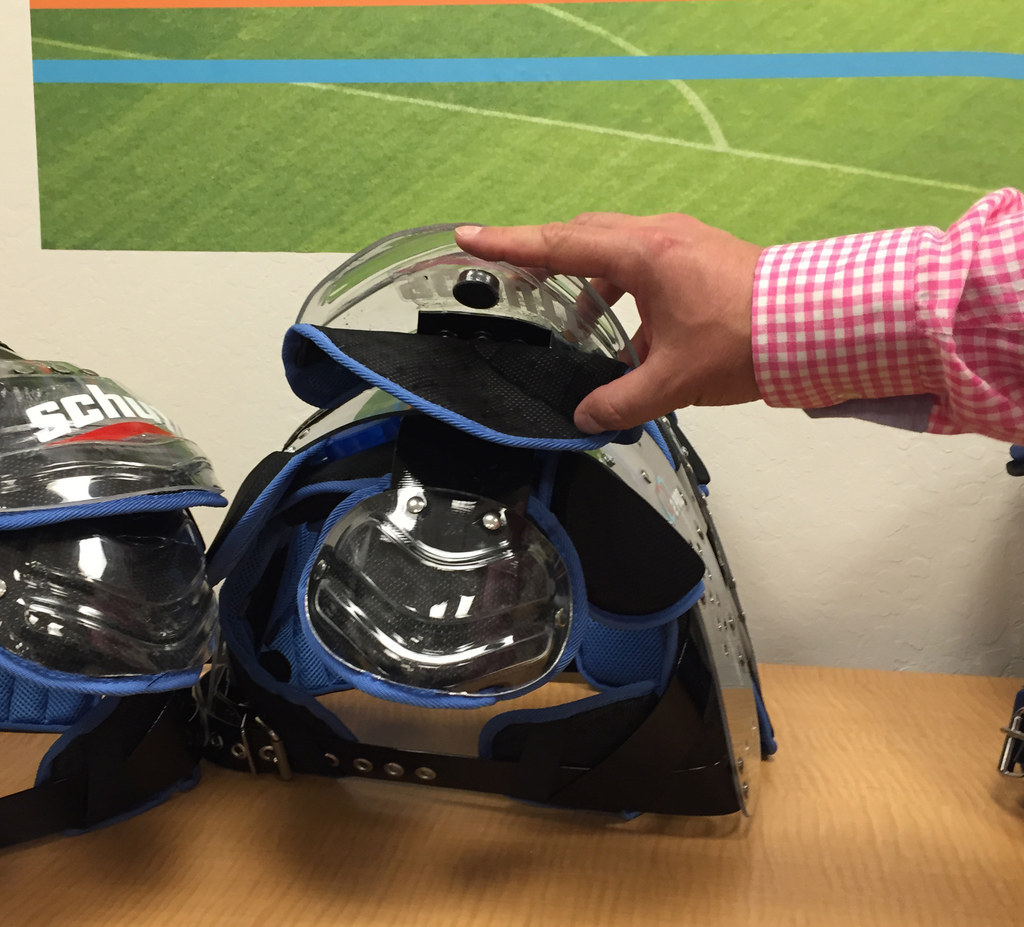
The technology could eventually be used as part of the NFL's training regimens, strategy, and injury analysis. And it could be a (literal) game changer in terms of how plays are called. For example, if one player only gets thrown to when he's lined up on one side of a formation, Zebra knows. That knowledge could be invaluable to a coach who could, for instance, put his best cornerback on that player when he lines up on the side he gets thrown to, and stick a less talented player on him when he's on the other side. The potential to make football a much more complex game is here, even if it requires more testing. The NFL makes about $10 billion a year in revenue, and it's unlikely that the league will rush to fix what ain't broke, so it might be a while before this location tracking makes a measurable impact. But even for what it is now, it's already decidedly cool.
